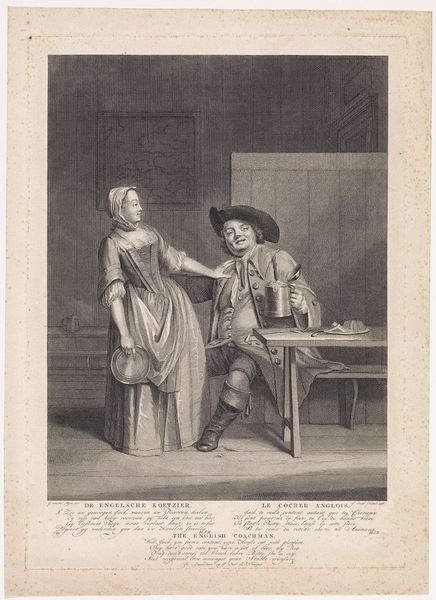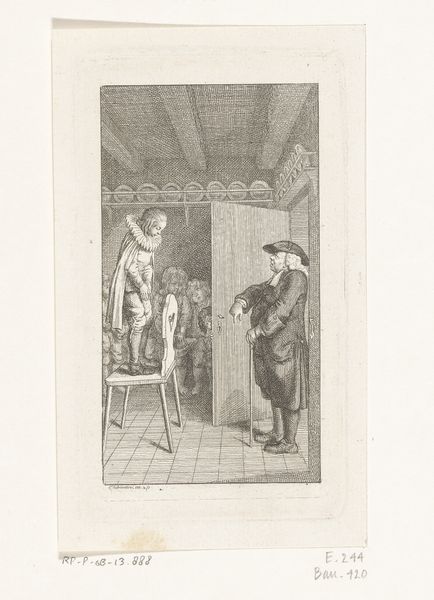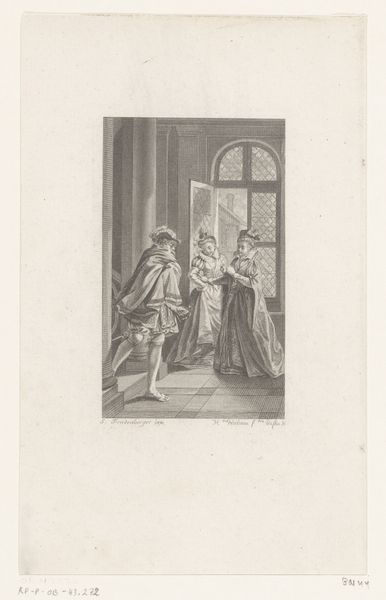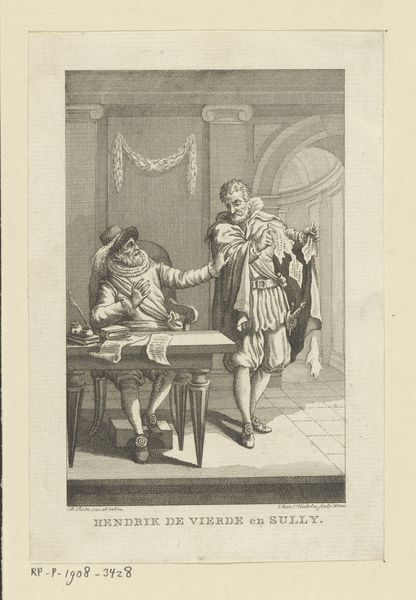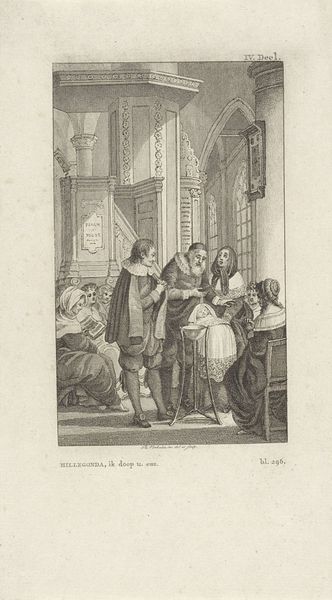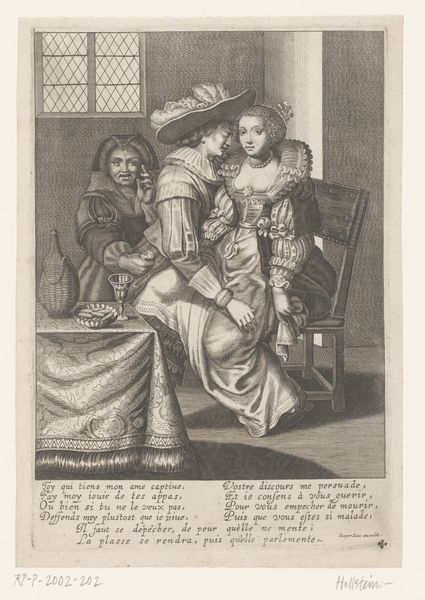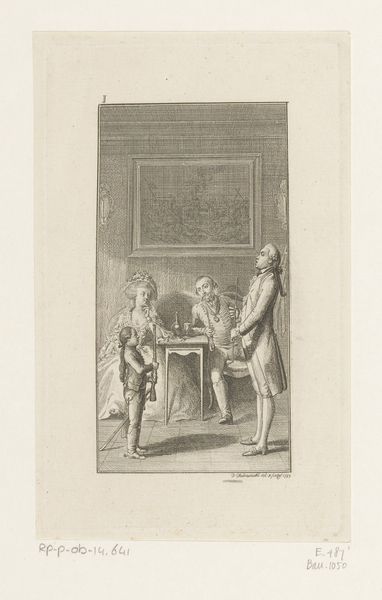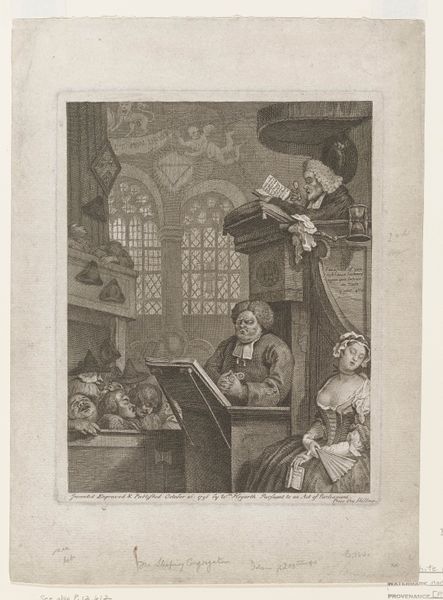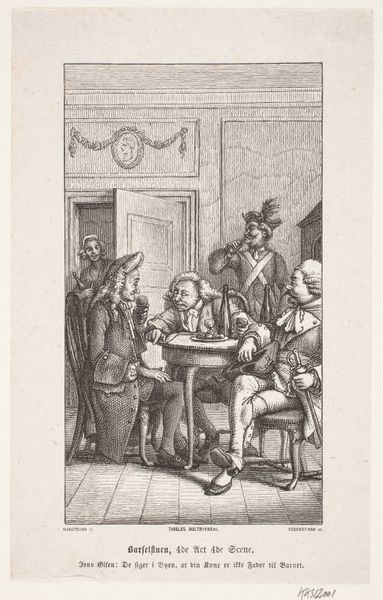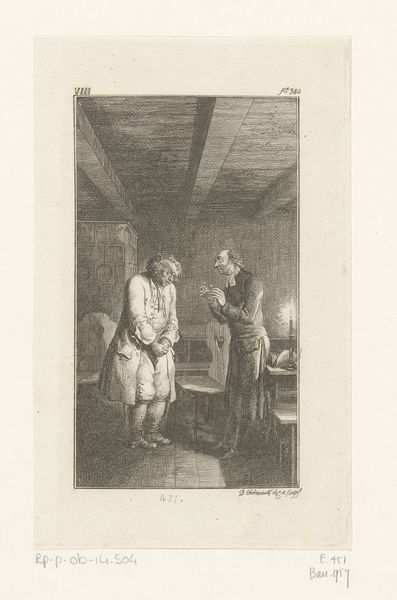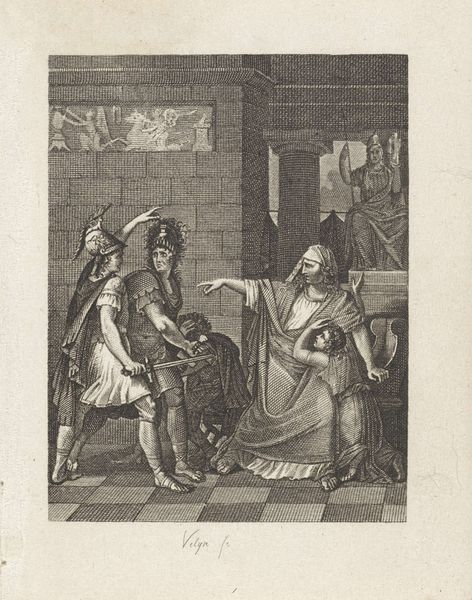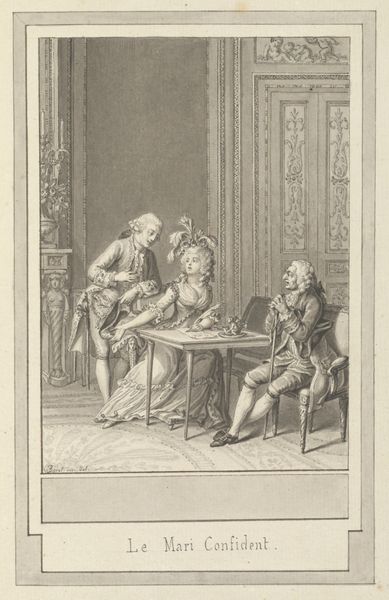
#
toned paper
#
light pencil work
#
wedding photograph
#
photo restoration
#
wedding photography
#
pencil sketch
#
archive photography
#
historical photography
#
old-timey
#
19th century
Dimensions: height 408 mm, width 292 mm
Copyright: Rijks Museum: Open Domain
Curator: Ah, yes, "Koetsier in een herberg," or "Coachman in a Tavern," by Jan Punt, dating to 1756. It’s a fascinating pencil sketch. My immediate reaction? Intimate. Look how the artist used simple lines to suggest a world of implied narratives within this tavern scene. Editor: The process is intriguing, especially considering the etching. How was this reproduced and distributed? And what were the typical conditions that a coachman and barmaid found themselves in? Curator: Consider first the stark contrast between light and shadow – the artist's deliberate use of hatch marks gives form to the sitters. See how the artist's line defines shape; it’s structural in the truest sense of its aesthetic. Editor: Yet that same line describes the reality of the barmaid’s existence, forever pouring beer for an underpaid driver class. We shouldn't forget about the tavern keeper’s process either, buying cheap beer to mark it up for an extra bit of profit, an exploitation of class lines. Curator: Agreed, context informs our understanding. But purely from a formal point, it is in that spatial balance – the arrangement of shapes – that we glean Punt's artistic intent. Note how her forward gaze is central to the narrative’s perspective as well. Editor: Sure, and considering Punt’s technique allows a peek into eighteenth century class strata. Taverns acted as meeting places for workers, and cheap, consumable alcohol for the lower classes offered respite from otherwise harsh environments and cruel labor conditions. I’d imagine the materials, from the paper to the tankard, would have a long story to tell as well. Curator: Absolutely. And perhaps that dialogue—between the labor, material, form and figures within—is exactly what Punt sought to capture. It would suggest a wider array of possible meanings beyond mere appearances. Editor: Indeed, thinking about Punt’s place as both an observer and interpreter gives more depth to understanding how eighteenth-century tavern life actually played out among these disparate social strata. It truly transforms our perspective on everyday class relations!
Comments
No comments
Be the first to comment and join the conversation on the ultimate creative platform.
